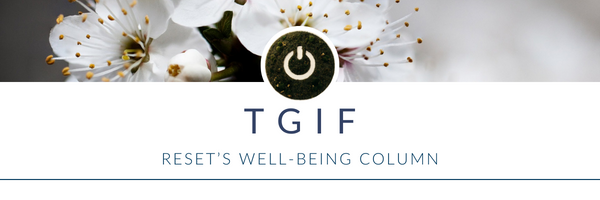How to be a Human Leader
This week I went to my kid’s open house and I was bewildered that he’ll be in a preschool class with 25 other kids. I immediately respected his teachers even more. To me, 25 humans to try and understand what makes them tick, motivates them, what they like to do on the weekends and who their families are is a lot to manage. When I get asked how big our team will get at Reset, 25 is always my number because in my mind that’s my limit on being able to connect human to human with every person. But I’m not sure we all have that same expectation as a leader.
Whether you’re in the schools, at home or in a workplace, you have the opportunity to be a leader. I challenge the types of leadership we have been taught that promote brashness, competitiveness and disconnection to the human. This week I’m sharing some of my favorite ways to approach leadership skills in the home, at school, in the workplace. I promise regardless if you’re just leading your pet, you’ll learn something.
TOOLS
Yesterday I had the honor of speaking to the staff at Discovery Middle School to prepare them for the upcoming school year. I asked them to do an exercise that I’m going to now ask of you:
Please stand up.
Now, think of all the things that have happened to you in your life that you carryover from day to day. Think of how much space that takes up within you.
How much room inside of you is filled with stories of shame, fear, traumas, guilt, resentment, frustration, worry and the things you cannot control?
With that awareness, put your hand on a place on your body that marks how full it is with all the this stuff you’re holding. Is it at your chest? Neck? Eyes?
How much room does that leave for you to handle all the stuff that just naturally comes up then that day without feeling like you’re exploding?
You see, we were talking about what happens that gets in the way of them being compassionate. It happens to all of us. We just lose it. We reach a limit and just say, “I can’t” anymore and we feel we can no longer stay calm, conscious and caring.
Why?
It’s because of the water level we’re carrying within us day to day. The stuff from years of stories about what has happened to us. Then we double-down with the things that pile up in that day. The spilled coffee, the traffic, the annoying colleague or kid’s temper tantrum.
GRATITUDE
Now, what would happen if we recognized the water level in each of the colleagues, students, children, friends we encounter every day?
We’d respond with empathy.
We’d also be able to approach ourselves with so much more grace if we could check-in with ourselves daily and assess our water levels.
If we check in with our own and other’s capacity each day, we can find that we are all maybe needing more care. We can be kinder, more understanding, more human.
The Discovery teachers were telling me about some of the ways they stay compassionate and (yes this happened) literally “reset themselves” between classes and I just was so grateful that there are human leaders out there demonstrating such positive emotional awareness to our kiddos.
Let’s have more of that.
INNOVATION
I listened to the Brene Brown - Ted Lasso podcast episode this week and was struck by something interesting in it. They said that the world is taken by Ted Lasso who appears to be this anomaly of a human when in reality they made him as just a normal, Midwestern values type of guy.
But the problem is that the world has become so jaded that someone who’s optimistic, curious and empathetic seems so elusive.
My favorite philosophy of Ted Lasso is to be curious, not judgmental. And that is being mindful. That’s being a mindful leader. Why? Because mindfulness is to get curious about what we are observing without judgment.
But again, our water level gets in the way of our ability, our capacity to stay curious.
FEELS
Okay, so what do we do about our water level so that we can be more curious, empathetic and human towards others?
First, we must have awareness of it. We must acknowledge the things we carry.
Then, we have to feel, heal and deal with it. That’s the on-going work. It demands courage, vulnerability. It requires us to face the discomfort and get honest with ourselves.
From there, it’s habits. We build habits to help keep our water levels manageable day to day. Things like wellness routines, sleep hygiene, food choices, relationships, and what we put our energy towards.
And every day, every moment, we have an opportunity to reset. To take an empowered reset so we can return to compassion, for ourselves and others.
Click here to learn more about The Team Reset.


